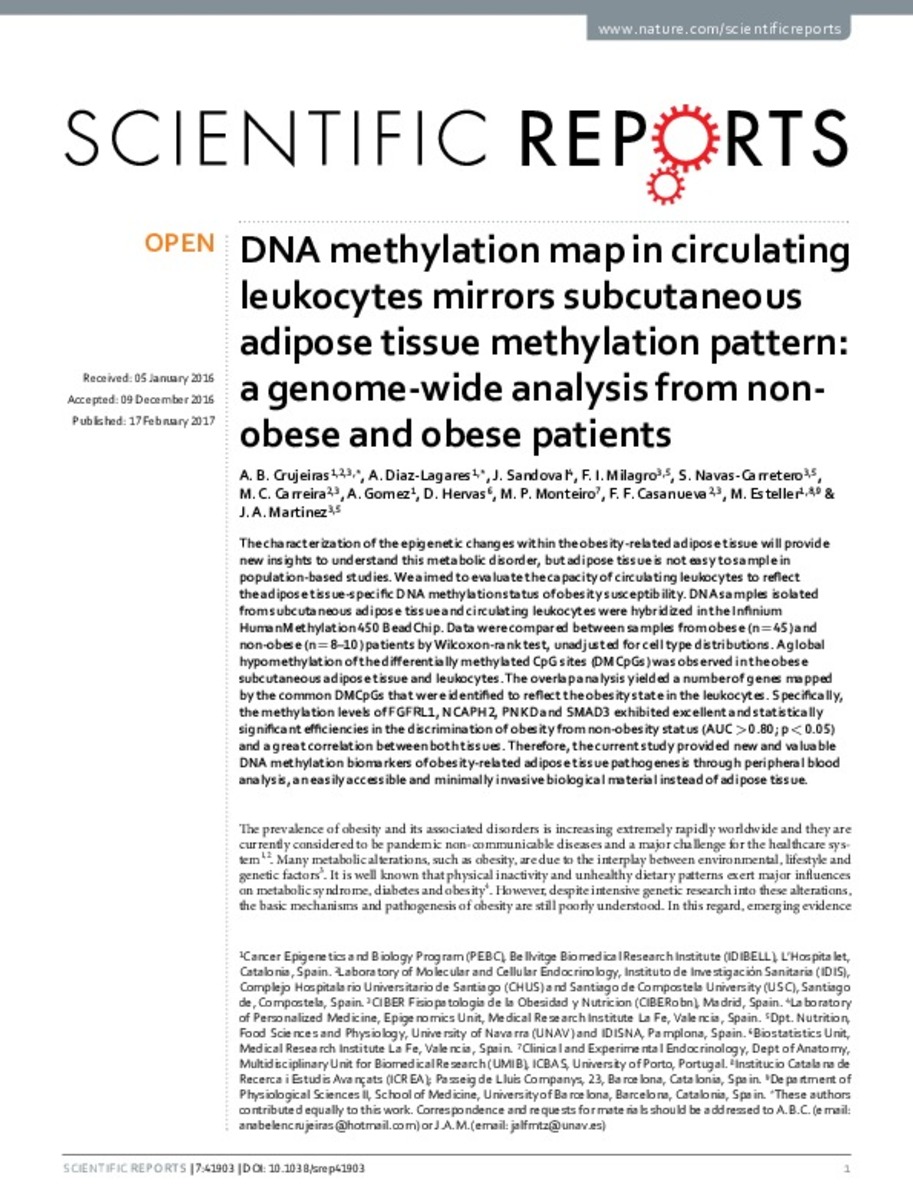DNA methylation map in circulating leukocytes mirrors subcutaneous adipose tissue methylation pattern: a genome-wide analysis from non-obese and obese patients
Palabras clave :
Materias Investigacion::Farmacia
Fecha de publicación :
2017
Editorial :
Nature Publishing Group
Nota:
Creative Commons Attribution License 4.0
Cita:
Crujeiras A. B., Diaz-Lagares A., Sandoval J., Milagro F.I., Navas-Carretero S., Carreira M. C., et al. DNA methylation map in circulating leukocytes mirrors subcutaneous adipose tissue methylation pattern: a genome-wide analysis from non-obese and obese patients. Scientific reports, 2017Feb,17;7:41903.
Aparece en las colecciones:
Estadísticas e impacto
0 citas en

0 citas en

Los ítems de Dadun están protegidos por copyright, con todos los derechos reservados, a menos que se indique lo contrario.







